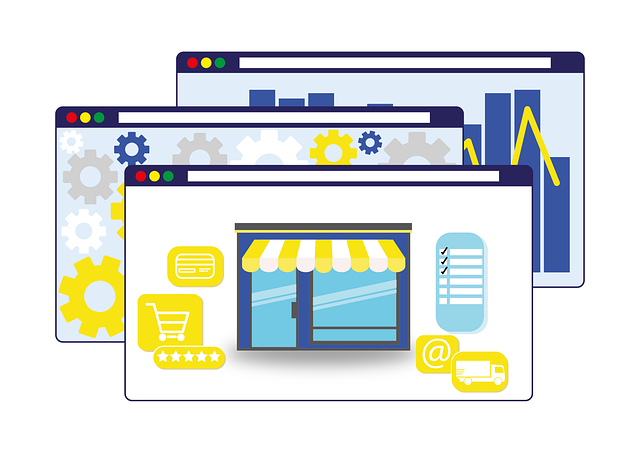Under the Hood - Dynamic Websites
Posted on:
A couple of weeks ago, we looked at static websites, and how you can tell if a static website is the right choice for you and your business, now we’re going to take a look at dynamic websites, for those who don’t quite fit with static websites. Simply looking at a website is often not enough to work out if the site is static or dynamic though, to work that out we often need to take a look under the hood and see the inner workings of the site and how it runs.
You may not need to know if your site is dynamic or static as long as your developer has provided great resources on accessing and updating your website.
What is a Dynamic Website?
A dynamic website is one that typically runs on a server (as opposed to a static website which can just be a folder of files), and has the ability to change or adapt depending on the user and how they interact with the site. This could include an ecommerce website that adjusts stock levels when someone adds an item to their cart, or a site with user login that displays a personalised view to each user depending on the information in their account.
Changes in content doesn’t necessarily depend on a user’s interactions though, it could even be an airline site that shows different specials on the homepage depending on where you’re located (computers can roughly work out location depending on your internet connection), or an event page that shows dates and times in your time zone.
This can even go further and look at the information stored in your browser (depending on your security settings), and offer you different content depending on your browsing habits. A great example of this is Google, if I search for the word router, I’m likely to get results for modems and networking routers, as a lot of the things I search for and the websites I access are tech related. But if a carpenter searches for router, they’re likely to get results for wood routers, as Google takes a look at search history and uses this to provide more accurate content.
Dynamic content can include anything from viewing different products according to your gender through to seeing customized content based on your location.

Social networking sites use dynamic content to show the user updates from their pre-configured friends networks. Ecommerce platforms can use dynamic content to show the user products that are relevant to their interests.
Why would I choose a Dynamic Website?
The main benefit of dynamic websites is the personalized experience for each user, so make sure your website is capable of making use of this feature.
Individual Experiences
Saving data in a user’s browser and utilising dynamic content means the experience can be tailored to the individual based on their interactions with the site. If the customer returns, the browser will retain information on their previous experience, which can then be used to help them better the second visit. The more customised the experience to your customer, the more your customers feel at home, which increases engagement and conversions.
Personalization can be based around time zones, user activity, where they clicked, and more.
Awesome Content
Dynamic websites are defined by their content, which is generated in real-time, on a server or directly in the user’s browser. Your website will change its appearance and functionality without requiring the user to reload the page. News sites are great examples of this, where the articles linked will constantly refresh, and menus will rebuild to match your browsing habits as you spend time on the site.

Responsive to Customer Input
Another advantage of dynamic websites is that they can be much more responsive to user input. For example, if a user is looking for a specific product on an ecommerce site, the site can use dynamic content to show the user products that match their search criteria, and also show any related products. You can shape their experience of your site with careful consideration of the questions your clients are asking, and working to deliver answers seamlessly. An example of this would be an online store, a specific customer may only purchase a brand name, so this preference can be noted, saved and future search results can prioritise that particular brand name.
Disadvantages of Dynamic Sites
One of the main disadvantages is that they require more server resources than static websites. This means that they can be more expensive to host and can be more difficult to scale. Additionally, dynamic websites can be more complex to develop and require more technical expertise.
If you're considering developing a website, you should weigh the pros and cons of dynamic websites before making a decision. Dynamic websites can provide a more personalized and responsive experience for the user, but they come at a cost. Consider your needs and budget before deciding which type of website is right for you.

One of the biggest disadvantages is that dynamic websites can be more difficult to optimize for search engines. This is because the content on a dynamic website can change frequently, which makes it difficult for search engines to keep up. Dynamic websites can be more resource-intensive, which can lead to slower loading times. Finally, dynamic websites can be more complex to develop and require more technical expertise. Always talk to your developer about your concerns and questions, you never know what you might learn!
Where to from here?
If you’d like to build your own dynamic website, there are plenty of resources online and you can look at utilising a platform like WordPress, which does a lot of the hard work for you and gives you a CMS to use with it (or check out our previous post on building a website). However if you’d prefer not to do the work yourself, or don’t have the time, you may want to look at hiring a developer to build it for you.
Create a list of the websites you love, and think about what you want your website to do before you start to think about whether it should be static or dynamic. Unless you want to write code, most people will never know whether their website is static or dynamic, and there are benefits and negatives to both.
If you are looking to build or rebuild your website, we’d love to say hi!
